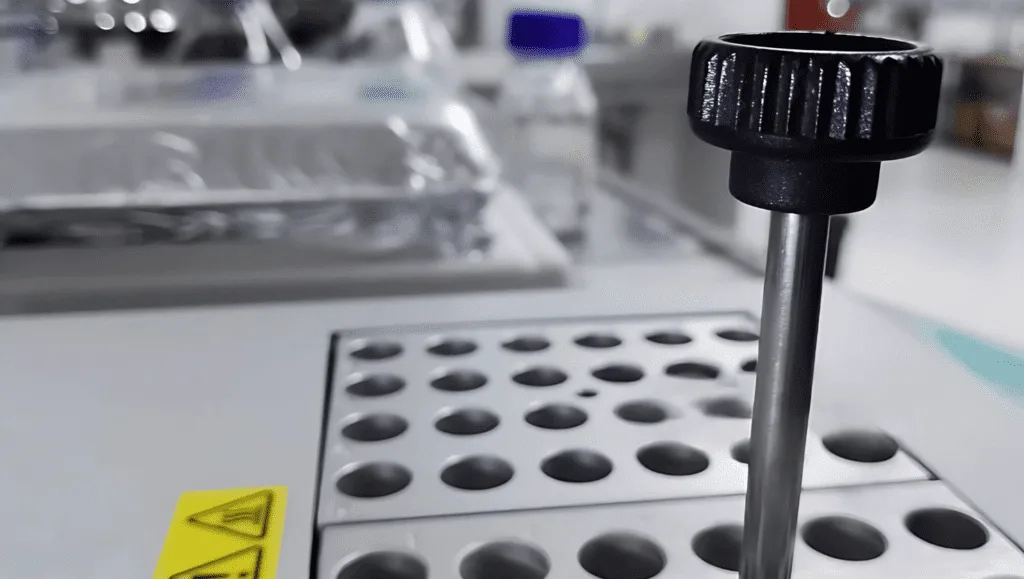Understanding Dry Baths and Their Importance
A dry bath is an essential laboratory equipment used for precise temperature control when heating samples in tubes or vials. Unlike water baths, these devices use a heating block to provide consistent temperatures, making them ideal for biological, chemical, and clinical research. Laboratories across South Africa rely on high-quality dry baths for applications ranging from DNA amplification to enzyme reactions.
As a leading supplier of laboratory equipment in South Africa, Apex Scientific provides reliable dry baths from reputable manufacturers like Wiggens. Understanding the different models, features, and applications will help laboratories choose the right dry bath for their needs.
Single-Place vs. Multi-Place Dry Baths
Dry baths come in single-place and multi-place heating block systems, each catering to different laboratory workflows.
- Single-Place Dry Baths – These systems are designed to heat one sample at a time, making them ideal for low-throughput labs requiring precise individual heating.
- Multi-Place Dry Baths – Designed for high-throughput settings, these units can heat multiple samples simultaneously. Some models accommodate different tube sizes, offering flexibility in various applications.
Choosing Between Single-Place and Multi-Place Systems
When selecting a dry bath, consider the following:
- Sample Volume – Single-place models are suited for small-scale applications, while multi-place systems handle larger sample volumes.
- Throughput Needs – Laboratories processing multiple samples benefit from multi-place models.
- Space Availability – Compact single-place units are ideal for small workspaces.
- Budget – Multi-place models cost more but improve efficiency in high-volume labs.
Tube Size Compatibility and Heating Blocks
Selecting the right heating block is crucial for ensuring compatibility with different sample tubes. Most dry baths support various tube sizes, including:
- Microcentrifuge tubes (0.2mL, 0.5mL, 1.5mL, 2mL)
- PCR tubes for molecular biology applications
- Larger test tubes and vials for clinical and industrial use
Many models feature interchangeable heating blocks, allowing researchers to switch between different tube sizes without needing multiple devices. This versatility enhances convenience and cost-effectiveness.
Applications of Dry Baths in Laboratories
Dry baths play a crucial role in multiple scientific and medical applications, including:
- DNA/RNA Amplification – Essential for PCR reactions where precise temperature control is critical.
- Enzyme Reactions – Used in biochemical and molecular biology research.
- Sample Incubation and Heating – Common in microbiology, chemistry, and pharmaceutical labs.
- General Laboratory Use – Ideal for thawing, sample preparation, and chemical reactions.
Temperature Control: Accuracy and Range
One of the most important considerations when choosing a dry bath is temperature control accuracy. Advanced models offer:
- Digital temperature control for precise adjustments.
- Wide temperature ranges to accommodate different applications.
- Fast heat-up times to improve workflow efficiency.
For applications such as PCR or enzymatic reactions, maintaining stable temperatures is essential to ensure accurate results. Some models also include temperature calibration features for added precision.
Factors to Consider When Choosing a Dry Bath
Before purchasing a dry bath, laboratories should evaluate:
- Portability & Space – Compact units are suitable for small workspaces, while larger models accommodate higher sample volumes.
- Adjustability & Customization – Models with interchangeable heating blocks offer greater flexibility.
- Budget & Efficiency – Cost-effective single-place models suit low-throughput labs, whereas multi-place units improve efficiency in high-throughput environments.
Additional Features & Accessories
Many modern dry baths come with optional accessories that enhance usability and safety, such as:
- Interchangeable heating blocks for different tube sizes
- Insulated covers to maintain stable temperatures
- Alarms and safety alerts for overheating protection
Built-In Safety Features
To ensure sample integrity and user safety, premium dry baths include:
- Automatic shut-off to prevent overheating.
- Over-temperature alarms for added security.
- Stable temperature maintenance for consistent results.
Making the Right Choice
Selecting the best dry bath depends on the lab’s sample volume, temperature accuracy needs, and required features. Researchers should consider whether a single-place or multi-place heating block system fits their workflow.
For expert guidance on choosing the right dry bath, contact Apex Scientific, a trusted supplier of laboratory equipment in South Africa. Explore our selection of high-quality dry baths from leading manufacturers like Wiggens to find the perfect solution for your laboratory.




